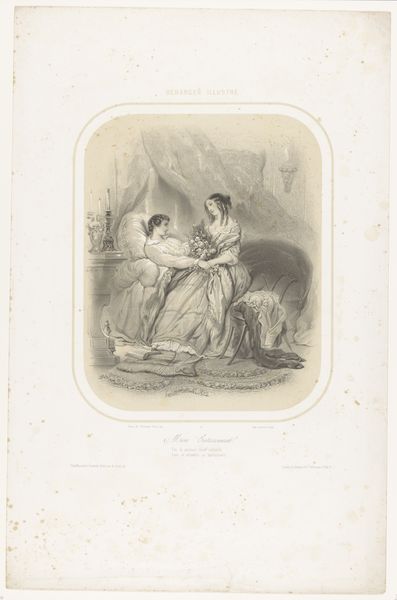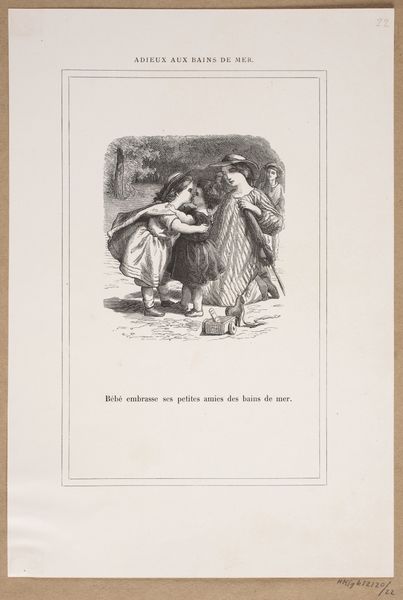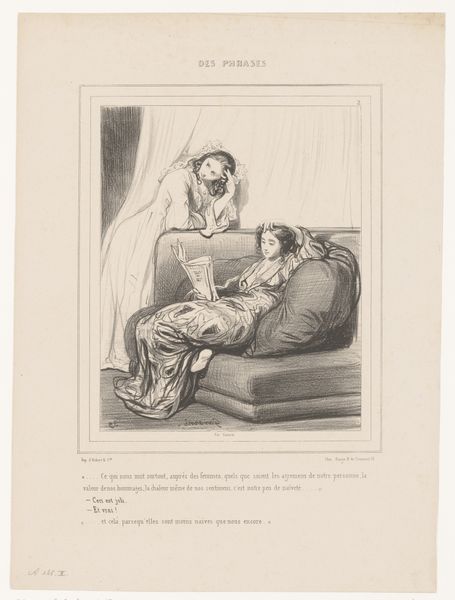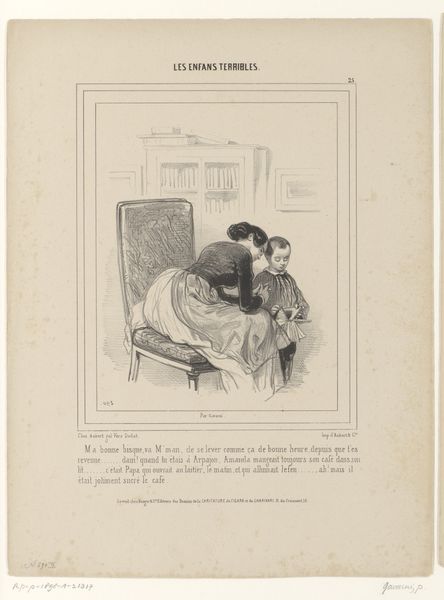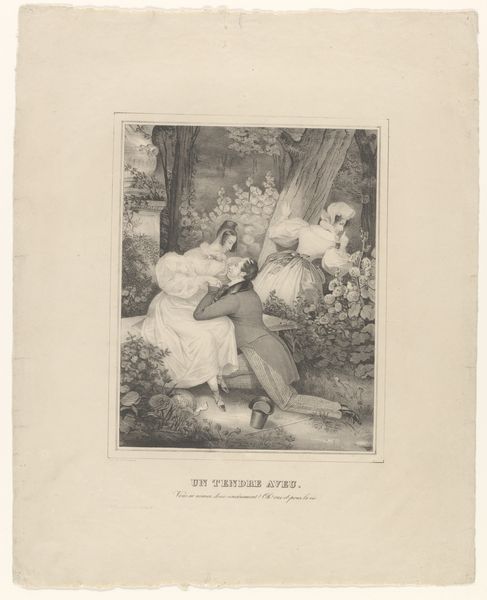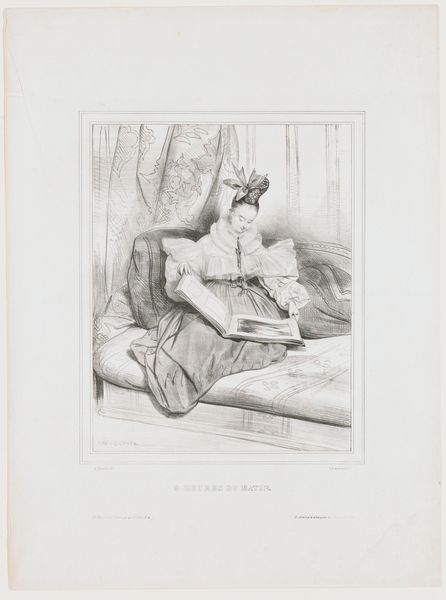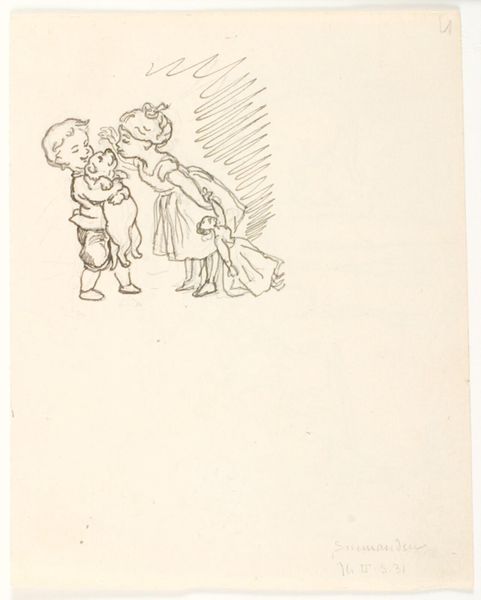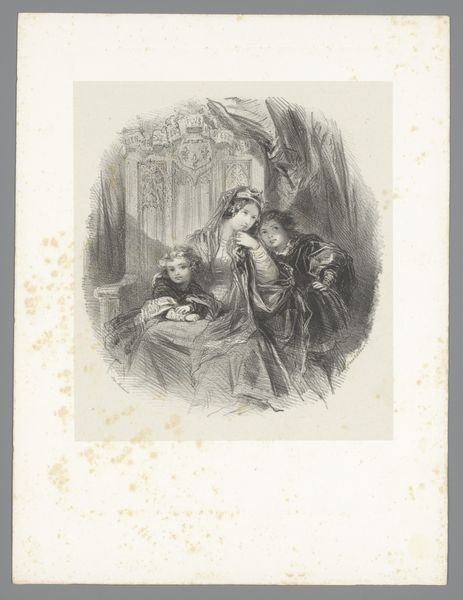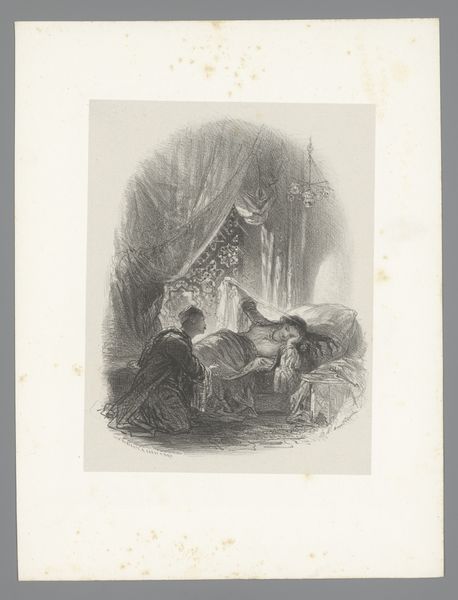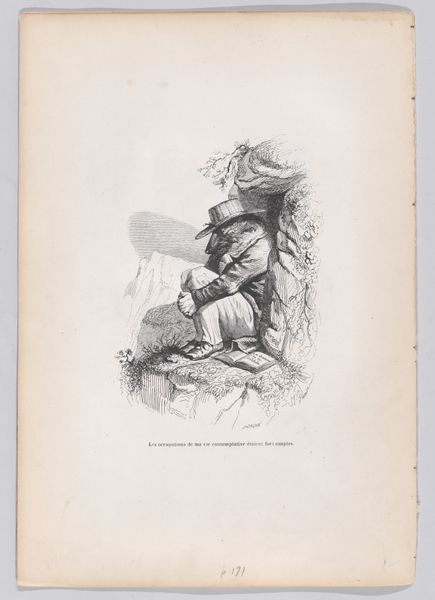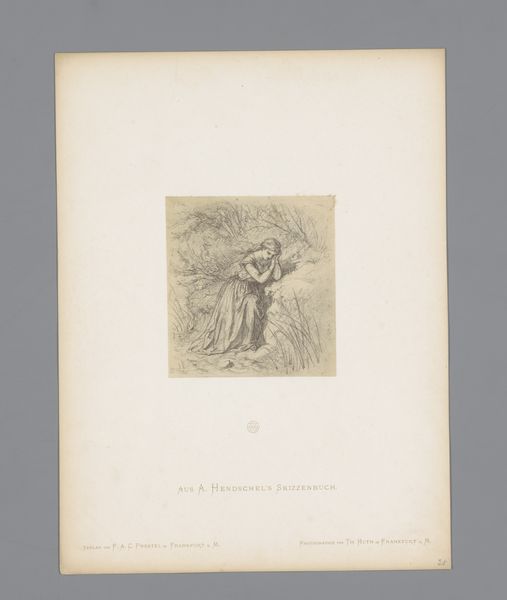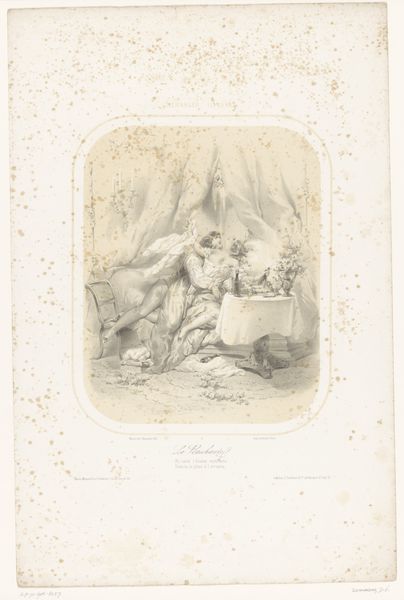
drawing, print, etching
#
portrait
#
drawing
#
mother
# print
#
etching
#
pencil sketch
#
pencil work
#
genre-painting
Dimensions: height 225 mm, width 145 mm
Copyright: Rijks Museum: Open Domain
Curator: Here we have Tony Johannot's etching, "Two Children with a Woman on a Bed," likely created sometime between 1813 and 1852. Editor: My initial impression is of soft intimacy, achieved with very fine, delicate lines. There’s a real sense of tenderness in how the figures are positioned. Curator: It is an intriguing domestic scene. The presence of mother and children, portrayed with delicate detail in the etching, presents an interesting perspective on familial roles of that era. How do you interpret the visual relationships created by these etched lines? Editor: Well, consider how the lines delineate form, particularly in the draping fabric and the faces. Notice the contrast between the dark, concentrated lines creating depth in the background, versus the lighter touch used for the skin, to make them pop up. The artist focuses our attention on those key figures. Curator: I see what you mean. This work was created and consumed in a rapidly changing world. Printmaking was becoming increasingly accessible, leading to new ways that images circulated. The image of the mother with children had symbolic weight in discussions of morality and domesticity during the 19th century. Editor: Right. But focusing on the internal, visual language again, consider how the composition, while seemingly simple, directs our eye. The slight asymmetry, how the figures lean slightly to the left, creates a sense of gentle movement. Curator: I'd agree, it also allows one to connect it to a broader narrative. Its visual qualities contribute to the discussions on gender, family and social change that were prevalent at the time. What’s your ultimate read of the scene? Editor: Formally, I think it excels in how it conveys subtle emotion using primarily line and tone. It suggests, rather than tells, which creates that strong sense of tenderness. Curator: And when one contextualizes the piece, one cannot help but consider how its creator contributed to shaping visual culture and broader societal narratives of 19th-century Europe through simple acts and scenes depicted in art. Editor: Yes, you bring up very interesting points that encourage one to reflect upon and to decode.
Comments
No comments
Be the first to comment and join the conversation on the ultimate creative platform.

